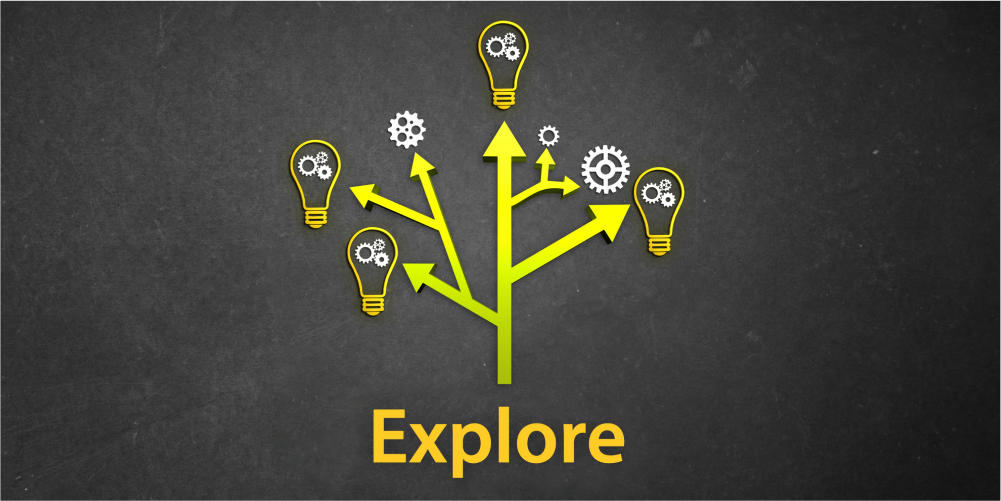Business Transformation, zBlog
Microservices Design Patterns: Crafting Scalable, Resilient, and Evolvable Systems

In the era of digital transformation, organizations are increasingly embracing microservices architectures to build scalable, resilient, and agile applications. By breaking down monolithic applications into smaller, independently deployable services, microservices enable teams to develop, deploy, and scale components independently, fostering faster innovation cycles and improved responsiveness to changing business needs.
However, as with any architectural paradigm, the successful implementation of microservices requires careful consideration of various design patterns and principles. These patterns not only guide the decomposition of monoliths into microservices but also address critical concerns such as inter-service communication, data management, fault tolerance, and operational complexity.
In this thought leadership piece, we’ll explore the world of microservices design patterns, examining their significance, benefits, and real-world applications. We’ll also delve into the strategies and best practices for effectively implementing these patterns, enabling organizations to unlock the full potential of microservices architectures.
The Significance of Microservices Design Patterns

Adopting microservices is more than just breaking down a monolithic application into smaller services. It requires a fundamental shift in architectural thinking, embracing principles of modularity, loose coupling, and autonomy. This shift introduces new challenges and complexities that must be addressed through well-established design patterns and best practices.
Microservices design patterns play a crucial role in:
- Fostering Scalability and Resilience: By following patterns that promote loose coupling, fault isolation, and effective load distribution, organizations can build microservices-based applications that scale seamlessly and remain resilient in the face of failures or high traffic.
- Enabling Evolvability and Agility: Microservices design patterns facilitate the independent evolution and deployment of individual services, allowing organizations to quickly adapt to changing requirements and embrace new technologies without disrupting the entire system.
- Promoting Consistency and Best Practices: Adhering to proven design patterns ensures consistency in the way microservices are designed, developed, and deployed across teams and projects, fostering code maintainability and knowledge sharing.
- Addressing Cross-Cutting Concerns: Patterns address cross-cutting concerns such as inter-service communication, data management, security, observability, and operational complexities, providing organizations with a structured approach to tackle these challenges.
- Reducing Complexity and Technical Debt: By following established patterns and best practices, organizations can avoid common pitfalls and reduce the complexity and technical debt associated with microservices architectures.
Exploring Key Microservices Design Patterns

While there are numerous design patterns applicable to microservices architectures, some of the most prominent and widely adopted patterns include:
- Decomposition Patterns:
- Service Decomposition Patterns: These patterns guide the process of breaking down a monolithic application into smaller, cohesive services, such as the Strangler Pattern, the Decomposition by Business Capability Pattern, and the Decomposition by Domain Pattern.
- Event-driven Architecture (EDA) and Event Sourcing: These patterns promote loose coupling and asynchronous communication between services, enabling scalability, resilience, and evolvability.
- Inter-Service Communication Patterns:
- API Gateway Pattern: This pattern introduces a centralized entry point for clients, abstracting the complexity of individual services and providing features like load balancing, caching, and authentication.
- Async Message-based Communication Patterns (e.g., Pub/Sub, Message Queue): These patterns facilitate asynchronous, decoupled communication between services, promoting scalability and fault tolerance.
- Data Management Patterns:
- Database per Service Pattern: This pattern advocates for each service to have its own dedicated database, promoting autonomy and reducing contention.
- API Composition Pattern: This pattern enables services to expose and consume data via APIs, promoting data autonomy and reducing the need for direct database access across services.
- Resilience and Fault Tolerance Patterns:
- Circuit Breaker Pattern: This pattern prevents cascading failures by preventing further requests to a failing service until it recovers.
- Bulkhead Pattern: This pattern isolates failures within separate pools, preventing a single failing component from bringing down the entire system.
- Retry and Fallback Patterns: These patterns provide mechanisms for retrying failed operations and fallback strategies to gracefully handle failures.
- Observability and Operational Patterns:
- Distributed Tracing and Logging Patterns: These patterns enable end-to-end tracing and centralized logging across services, facilitating effective monitoring and troubleshooting.
- Service Mesh Pattern: This pattern introduces a dedicated infrastructure layer for service-to-service communication, providing features like load balancing, service discovery, and traffic management.
- Cross-Cutting Patterns:
- API Gateway Offloading Pattern: This pattern offloads cross-cutting concerns, such as authentication, caching, and rate limiting, from individual services to a centralized API gateway.
- External Configuration Store Pattern: This pattern promotes the externalization of configuration data, enabling dynamic configuration changes without service restarts.
These patterns, and many others, provide organizations with a structured approach to designing, building, and operating microservices-based applications, addressing various challenges and promoting best practices.
Implementing Microservices Design Patterns Effectively

While the benefits of microservices design patterns are compelling, their effective implementation requires careful planning, organizational alignment, and a deep understanding of the patterns themselves. Here are some key considerations:
- Align with Organizational Goals and Priorities: Ensure that the selected design patterns align with your organization’s goals, priorities, and technology stack. Carefully evaluate the trade-offs and implications of each pattern in the context of your specific requirements.
- Foster a Culture of Collaboration and Cross-Functional Alignment: Microservices architectures demand close collaboration between development, operations, and security teams. Foster a culture of cross-functional alignment, shared ownership, and open communication to ensure successful pattern implementation and ongoing operations.
- Invest in Training and Knowledge Sharing: Provide comprehensive training and knowledge-sharing opportunities to ensure that teams understand the intricacies of the selected design patterns, their implications, and best practices for implementation and maintenance.
- Adopt an Iterative and Incremental Approach: Embrace an iterative and incremental approach to pattern implementation, starting with a pilot project or a specific domain, and gradually expanding across the organization, allowing for feedback, refinement, and continuous improvement.
- Establish Governance and Standards: Define clear governance models, policies, and standards to ensure consistency in the application of design patterns across teams and projects. Establish processes for pattern evolution, change management, and ongoing maintenance.
- Leverage Automation and Infrastructure as Code: Microservices architectures inherently involve a high degree of operational complexity. Leverage automation and Infrastructure as Code (IaC) practices to streamline deployment, scaling, and management of microservices, ensuring consistency and reproducibility across environments.
- Prioritize Observability and Monitoring: Implement robust observability and monitoring practices, leveraging patterns like distributed tracing and centralized logging, to gain visibility into the behavior and performance of individual services and the overall system.
- Embrace Continuous Integration, Continuous Delivery, and DevOps: Adopt CI/CD practices and DevOps principles to enable rapid and reliable delivery of microservices, fostering agility and responsiveness to changing business needs.
Conclusion
At Trantor, a leading provider of digital transformation and enterprise services, we understand the complexities and challenges associated with implementing microservices architectures. Our team of experienced architects, developers, and DevOps consultants have deep expertise in microservices design patterns and best practices, enabling us to guide organizations through every step of their microservices journey.
Our comprehensive microservices services encompass strategy and planning, architectural design, pattern implementation, and ongoing optimization. We work closely with your teams to assess your current landscape, define goals and priorities, and design a tailored microservices architecture that leverages proven design patterns and aligns with your organization’s technological stack and business objectives. We prioritize knowledge transfer and capability building, ensuring that your teams understand the intricacies of the implemented design patterns, their implications, and best practices for maintenance and evolution.
Furthermore, we foster a culture of collaboration and cross-functional alignment, bringing together development, operations, and security teams to promote shared ownership and a seamless transition to a microservices-based delivery model. Our experts work hand-in-hand with your teams, providing guidance, mentorship, and support throughout the implementation and optimization phases.
By partnering with Trantor, you gain access to our extensive expertise in microservices architectures, cloud technologies, DevOps practices, and infrastructure automation, ensuring a comprehensive and end-to-end approach to your microservices transformation journey
Our services extend beyond the initial implementation phase, as we provide ongoing support and optimization to ensure that your microservices architecture remains resilient, scalable, and aligned with evolving business needs. Our experts continuously monitor and analyze the performance of your microservices, identifying areas for improvement and implementing enhancements to drive greater efficiency, reliability, and agility.
We understand that embracing microservices architectures is more than just a technical endeavor; it’s a transformative journey that requires a strategic mindset, cultural alignment, and a deep understanding of the associated design patterns and best practices. That’s why our approach encompasses not only the technical implementation but also organizational change management, fostering a culture of collaboration, automation, and continuous improvement.
In the era of digital disruption, embracing microservices architectures has become a strategic imperative for organizations seeking to stay ahead of the curve. By leveraging proven microservices design patterns, businesses can build scalable, resilient, and evolvable systems that foster innovation, agility, and responsiveness to rapidly changing market demands.




